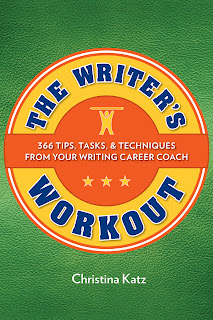Marketing: 1000 True Fans, by Randy Ingermanson
A couple of years ago, WIRED Magazine co-founder Kevin Kelly suggested the outrageous-sounding idea that an artist can make a decent living if he or she has a mere 1000 "true fans."
By "artist," Kelly meant anyone trying to make a living in one of the arts, whether fine arts, music, writing, or whatever. What's a "true fan?" Kelly defined it as someone who likes your work so much that they're willing to spend $100 per year on you. The calculation is simple. If 1000 people are each willing to spend $100 on you, then you can earn $100,000 from them. Most of us would consider that a decent living. You can read
Kelly's original article here.
It's an interesting idea and I think it has merit. I won't repeat Kelly's article here. Instead, I'll expand on his idea. I have three main points to make.
My first point is that there are different levels of fans, from rabidly loyal fans who would give you their left kidney, all the way down to very modestly loyal fans who would be happy to read your next book if they could get it for a dollar.
You tend to have many more modestly loyal fans than rabidly loyal ones.
Mathematicians learned long ago that this common sense idea can be reduced nicely to numbers using a "Pareto distribution". (Google it if you're a geek and want to know how it works.)
Here are some example numbers to show roughly how it plays out in practice.
If you have 200 true fans willing to spend at least $100 per year on you, then you probably have another 200 fairly true fans willing to spend at least $50 on you. And you probably have another 400 modestly true fans willing to spend at least $25 per year. And maybe another 1000 slightly true fans who would spend $10 a year. If you've got all those, then you would likely have close to 20,000 very tepid fans willing to spend a mere $1 per year on you.
Add up those various levels of fans, and you've got a potential $70,000 per year, which isn't bad.
What this means is that you can get by on fewer true fans than you might have imagined. In principle.
My second point is that a lot of authors focus most of their efforts on building their number of Facebook friends (or fans) or on building their Twitter followers.
There's nothing wrong with that, but there's a very low entry level to becoming a Facebook friend/fan or a Twitter follower. Anyone can do it in a few seconds.
Low investment, low commitment.
These kind of fans are nice to have, but bear in mind that they are mostly the $1 per year crowd. If they hardly know you, then they hardly spend money on you. These are what we might call microfans.
Fans who follow your blog or subscribe to your e-mail newsletter will be fewer in number, but they'll also be far more likely to be in the $10 per year group.
You don't have to find your superfans. They'll find you and tell you how much they love you. You can't sanely keep in touch with very many superfans, but that's okay because you probably don't have many anyway unless you're a superstar. Bear in mind that your superfans are the $100 per year people. These are the ones who'll drive 200 miles through a rainstorm to come to your booksigning. And buy a case of books for their friends.
The important thing to remember is that
you probably need different tools for keeping in touch with your microfans, your regular fans, and your superfans. Don't treat them all the same, because they're not.
My third point is that you won't earn $100 per year from your superfans unless you have more products available than just books. To earn $100, you need to actually have $100 worth of products available.
It's fairly rare for authors to have that much product available for sale. Generally, the only products authors display on their sites are their own books, and their publishers get most of the revenue from those.
But there's no reason for you to earn money only from your books. As an author, your main job is to be an entertainer. Any way you can entertain people is a possible way to earn money.
As one example, if you're an entertaining speaker (many authors are), you might pick up some extra cash by speaking. Your publisher will love you, because good speakers can move a lot of copies.
A friend of mine, Robin Gunn, has a
store that sells all sorts of goodies related to her books. She's got a large fan base, and naturally some of those fans are eager to spend money in her store.
Scott Adams, creator of the massively popular Dilbert comic strip, has a terrific web site with an
online store containing cool stuff that any Dilbert fan would love.
Of course the great majority of Scott's fans spend hardly anything on his site. The point is that those few who WANT to spend a lot on Dilbert goodies CAN spend a lot -- because Scott provides a ton of them.
If you're not published yet, you may think that none of this applies to you. Maybe it doesn't apply now, but it might apply extremely well someday. Whether you get published one year from now, or five, or ten, you'll want to earn enough money to keep writing.
Now is as good a time as any to
start thinking about how you'll want to keep track of ALL your fans – the tepid ones, the moderate ones, and the rabid ones. What could you do for each of these classes of fans that would make them happy -- and earn you enough money to do what you love doing?
You don't have to answer that question now. But think about it.
The future keeps coming at us faster and faster. When it gets here, you want to be ready for it.























